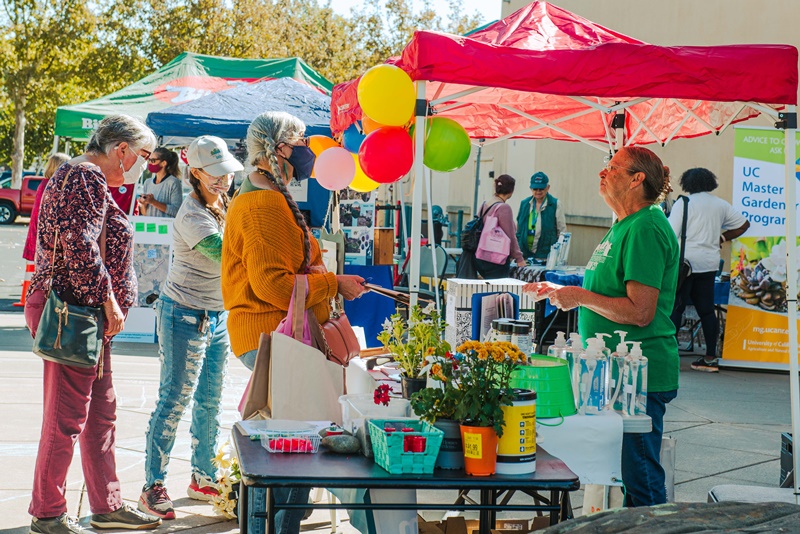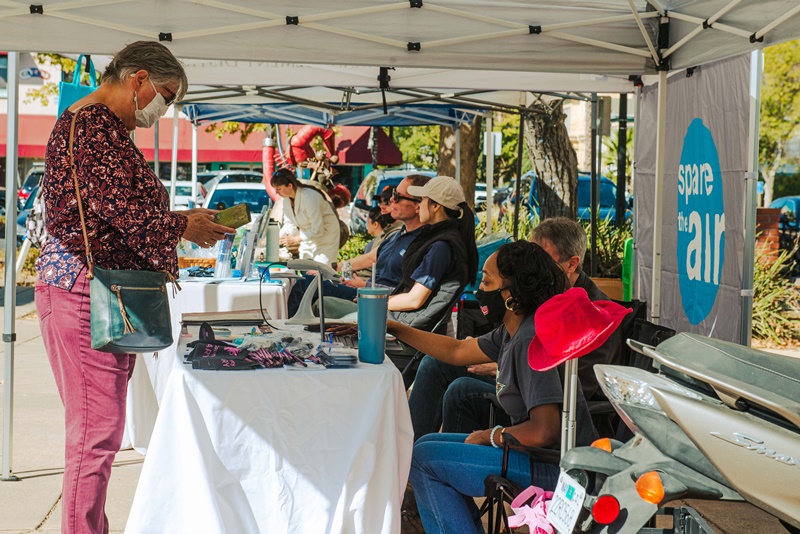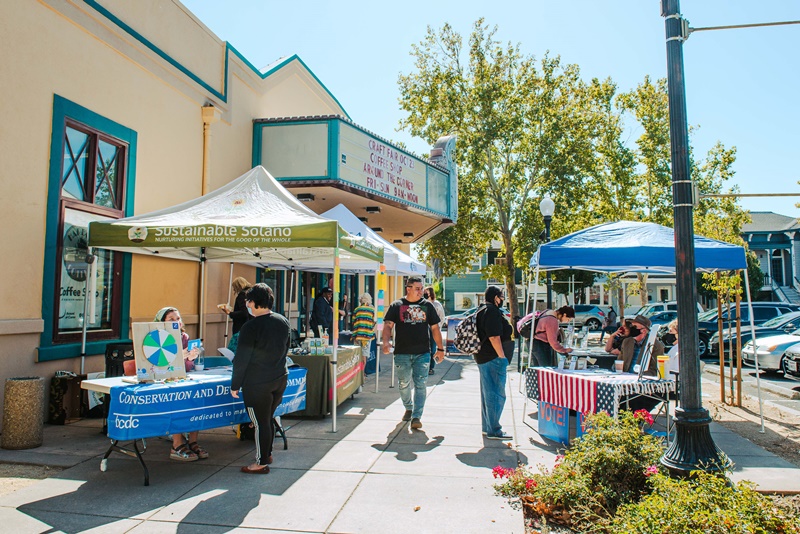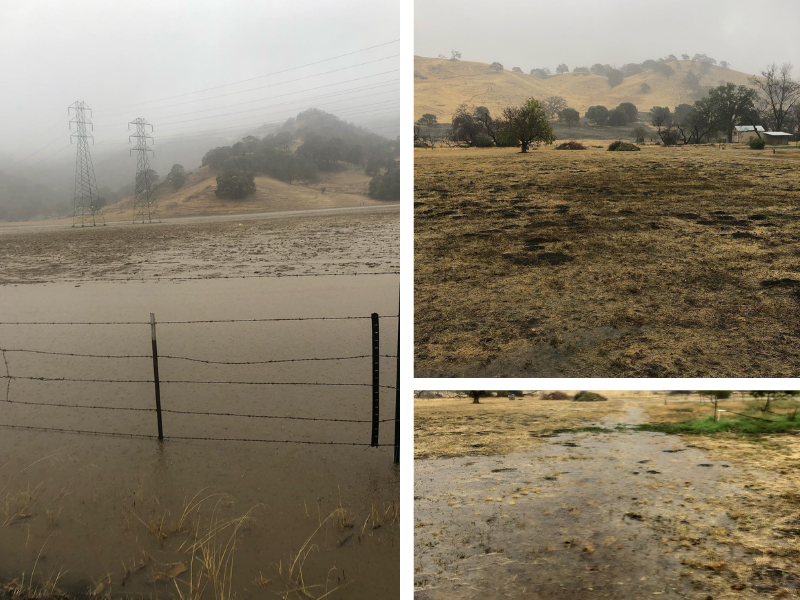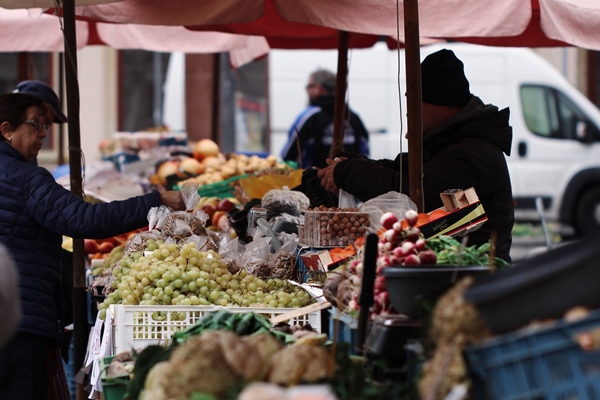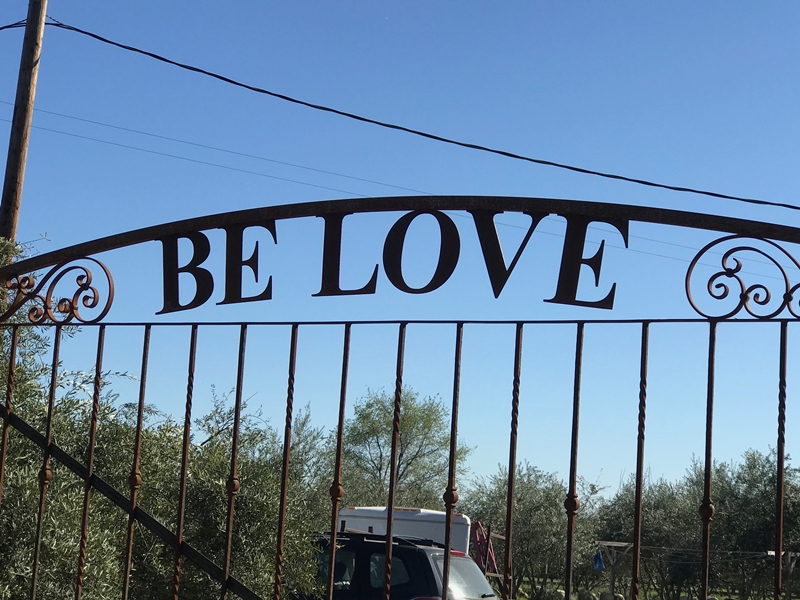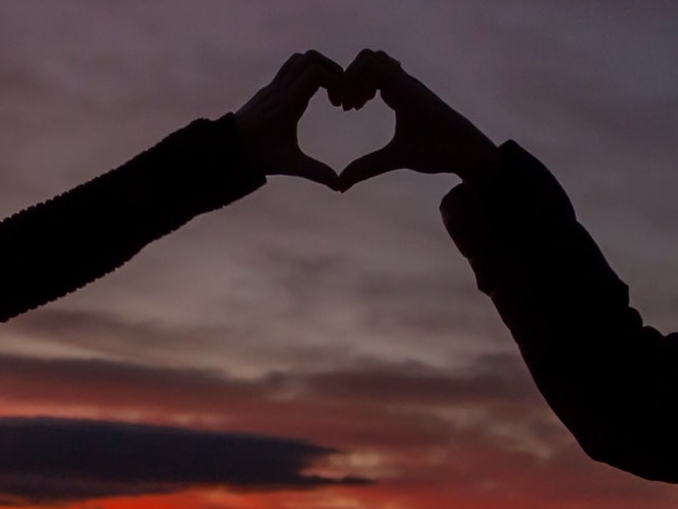Growing Healthier Plants and Ecosystems Regeneratively With Biology
By Michael Wedgley, Permaculture Designer and Soil Food Web Lab Technician
We are excited to be working with Michael and Hampton Bay HOA on the designs for two pilot sites that will demonstrate how lawn in common areas can be replaced with low-water, low-maintenance sustainable landscaping that is healthy, beautiful and natural. Here, Michael shares about the importance of healthy soil biology as part of that equation.
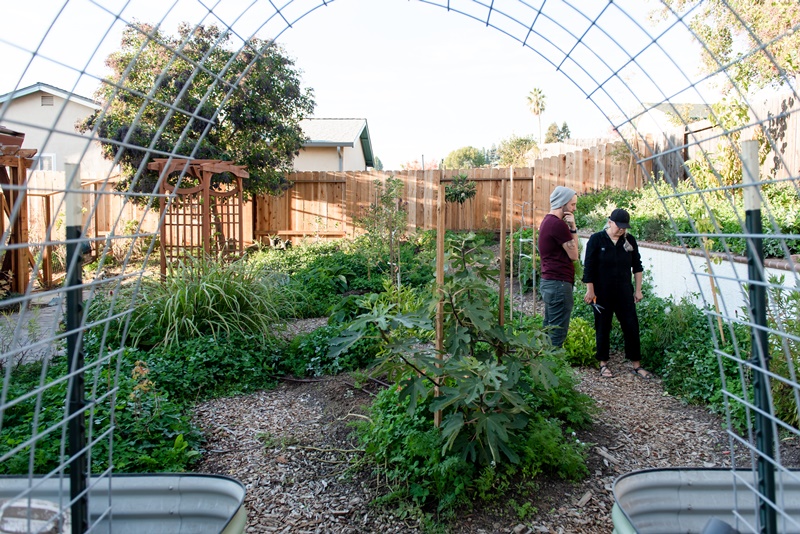
Michael Wedgley meets with a client in a permaculture garden he designed with healthy soil biology in mind.
Photo courtesy of GMC Photography and Video
Growing with biology is a decision to strike symbiosis with the natural world and allow natural systems to support the life of your plants. We can create greener, more vibrant ecosystems that support wildlife and humans more effectively and abundantly. We eliminate the need for toxic and time-consuming applications to “feed” plants and keep disease and pests at bay. By introducing biology into systems that are lacking and nurturing their establishment we can achieve balance in a system that allows us to let go of the wheel and let nature take over. This blog is meant to give a brief introduction to the natural process in action that allow for this transition.
Learn more about the Hampton Bay HOA project and Permaculture Designer Michael Wedgley on our HOA Projects page.
Who Are the Players
Fungi – Mushrooms are the fruiting body of a group of organisms known as Fungus. There are Fungi that break down material like leaves and wood, Fungi that form beneficial relationships with plants, and Fungi that parasitize plants. Fungi is the dominant nutrient-cycler in an old growth forest.
Bacteria – There is aerobic (oxygen preferring) and anaerobic (lack of oxygen preferring) bacteria. Most beneficial soil bacteria is aerobic; most disease forming bacteria is anaerobic. Bacteria help to mine nutrients from parent material and create structure in soil.
Nematodes – Nematodes are like microscopic worms. There are 3 primary groups to be aware of; bacterial feeding, fungal feeding, and root feeding. Root feeding can cause plant disease.
Protozoa – Large single celled organisms that feed on bacteria.
Nutrient Cycling
By ensuring that soil has adequate numbers of each of our microbial populations we eliminate the need for fertilizers. All soils have the necessary nutrients for plants to thrive. The biology in the soil makes those nutrients plant available through the nutrient cycle. This semi-complex interaction starts primarily with bacteria and through predation by nematodes and protozoa, excess nutrients are released into the soil.
Diversification and Disease Prevention
By ensuring that we have high and diverse populations of beneficial microbes we ensure there is no room for disease organisms to dominate and thrive. In general, just as in the human body, disease organisms in the soil and on the surface of the foliage of plants need a weak ecosystem to establish and thrive. By creating a diverse and abundant ecosystem of microbes we create a system that is impenetrable by diseases and pests.
Fungal to Bacteria Ratio and Weed Suppression
By customizing the ratio of the amount of Fungi in the soil to the amount of Bacteria in the soil, we can actually select for which plants we want to grow and eliminate weed species. To understand this, consider an old growth forest. You’ll notice that there are ferns, there are large coniferous trees, but nowhere can you find your typical garden weeds. The reason for this is the form of nitrogen released by fungi. This form of nitrogen (ammonia) is a lower ph. This is why you hear people say “blueberries prefer acidic soil.” On the other end of the spectrum (bacterially dominated) you have early succession plants like grasses. This is because the exudates created by bacteria are more alkaline. You don’t see many trees in prairies. Applying different compost preparations that have higher fungal to bacterial ratios we can begin to affect the ratio in the soil and have healthier plants and select against weed species.
Thermophilic Compost
The process in which we create compost to ensure the highest diversification of beneficial organisms and that we are able to eliminate pest organisms is through Thermophilic Composting. Using a diverse source of material, in the right balance, while maintaining aerobic conditions we are able to raise the temperature of a pile to the point that disease and pest organisms are destroyed while beneficial ones are left to thrive given the rich and diverse foods provided. We monitor the pile’s biology by assessing it under a microscope. Once the biological numbers are at our desired numbers it is ready for a number of applications.
Applications
With a microbially dominant compost that has our desired ratio we can apply the microbes through 3 primary applications.
- Direct compost applications – This application is recommended if the organic matter is lacking in dirt we wish to grow in. We can either till in some compost or apply to the surface of dirt.
- Compost extract – In this application we actually extract the microbes out of the compost and they become suspended in water. We can then apply this as a root drench to put the biology right where the plants will use it, or at areas of compaction where the bacteria can begin to loosen it up and create aerobic conditions with improved soil structure.
- Compost teas – Once we have an extract, we can “brew” it by adding oxygen into the water with some foods for the microbes. We let the extract bubble with aeration for roughly 24 hours while monitoring the growth under a microscope. Given time, bacteria and other microbes are able to multiply and form glues that allow them to stick to surfaces. We then spray this compost tea on the leaves of plants giving them a protective barrier from disease-causing organisms as well as allowing for nutrient exchange on the foliage of plants.
The number of applications necessary to establish a resilient and sustainable colony of beneficial microbes in the soil varies given many variables. The best way to picture what it takes is to think of settlers settling America, according to Elaine Ingham, microbiologist and researcher who created the Soil Food Web approach. Sometimes the first to arrive didn’t survive or few survived. The next ship was better prepared, or there were some settlers previously that made conditions slightly more hospitable so more were able to survive. Every subsequent ship going forward led to increasingly successful population growths until they became sustainable and reproduced and growing. It is the same with the microbes, and varies depending how hospitable or inhospitable the soil is to begin with, and how well it is protected during colonization.
Fertilizers, Pesticides, Salts, and Chemicals in Water
In establishing and maintaining healthy plants and healthy soil in a biological method we need to ensure the health and safety of the organisms. We must become caretakers of the invisible life that populates the soil beneath our feet and the foliage up above. A critical piece of this care is to ensure that their environment is not compromised by salts or chemicals which can completely eradicate the microbial populations. Fertilizers are a form of salts. All salts will dehydrate the cells of the microbes and cause death. Pesticides are created to destroy life. Even “targeted” pesticides have unwanted casualties and can upset the balance. Lastly chlorine and chloramine in water are designed to ensure lack of microbial growth in the pipes and therefore can do the same in your soil and on your plants. It is extremely important that we understand how fragile ecosystems can be. In general, these natural systems are extremely resilient, but when humans come in with their toxic approaches we upset the balance. Nature will always find a way back towards its attempt at turning everything into an old growth forest, but that takes time. If we want to have healthy and natural environments we have to help the biology along and make sure we don’t destroy it with our products.

